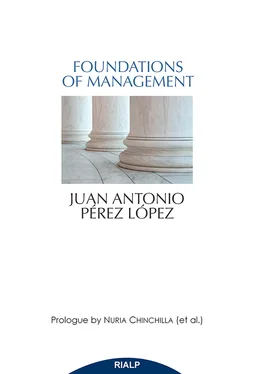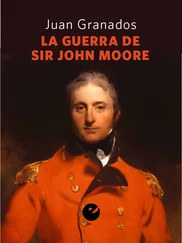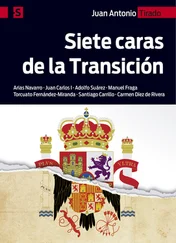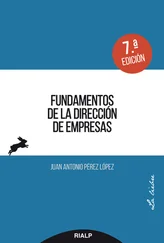
FUOUNDATIONS OF MANAGEMENT
© Juan Antonio Pérez López, 2014
© Ediciones RIALP, S.A., 2014
Alcalá, 290 - 28027 MADRID (España)
www.rialp.com
ediciones@rialp.com
ISBN eBook: 978-84-321-4483-7
ePub: Digitt.es
All rights reserved.
No part of this publication may be reproduced, stored in a retrieval system, or transmitted, in any form or by any means, electronic, mechanical, photocopying, recording, or otherwise, without the prior written permission of the copyright proprietor.
Contact CEDRO (Centro Español de Derechos Reprográficos, www.cedro.org) if you need photocopying or scanning any extract of this book.
PROLOGUE
FIRST PART THE COMPANY: A HUMAN ORGANIZATION
CHAPTER 1: BUSINESS ORGANIZATIONS AS HUMAN REALITIES
Introduction
What is an organization
Formal organization and real organization
Elements of the formal organization
Elements of the real organization
Theories or models for explaining organizations
Mechanical or technical system models
Organic models: the organization as an organism
Anthropological model: the organization as an institution
Application of models to real-life situations
The business firm as a human reality
CHAPTER 2: HUMAN MOTIVATION – Mechanistic and psycho-sociological theories
Introduction
The mechanistic theories
The psycho-sociological models
Maslow’s theory
Herzberg’s theory
McGregor: Theory X and Theory Y
The limits of the psycho-sociological paradigm
CHAPTER 3: THE ANTHROPOLOGICAL THEORY OF MOTIVATION
Introduction
Motives of individual actions
Types of needs
Motivational conflicts and their relationship to learning
CHAPTER 4: THE INFORMAL OR SPONTANEOUS SYSTEM
Introduction
The formal system of an organization
The spontaneous or informal system of an organization
Organizational members
The operative and structural relationship of an organization
CHAPTER 5: HOW ORGANIZATIONS WORK (I) – I. The mechanistic models
Introduction
The mechanistic models
The concept of “organizational purpose” in mechanistic model
The nature of the “fund of incentives”
Types of power
The intrinsic limits of “coercive power”
The extrinsic limits of “coercive power”
CHAPTER 6: HOW ORGANIZATIONS WORK (II) – II. The psycho-sociological models
Introduction
The psycho-sociological models
The psycho-sociological notion of “organizational purpose”
CHAPTER 7: HOW ORGANIZATIONS WORK (III) – III. The anthropological models
Introduction
The concept of the organization’s unity
The anthropological model
The business organization as an institution
SECOND PART: GOVERNANCE DECISIONS
CHAPTER 8: THE FUNCTIONS OF MANAGEMENT
Introduction
The content of management processess
The models or paradigms of management
The strategic dimension of management
The executive dimension of management
The leadership dimension of management
The nature of leadership
The development of authority
The loss of authority
CHAPTER 9: EVALUATION OF MANAGEMENT DECISIONS (I) – I. The effectiveness criterion
Introduction
The effectiveness criterion in management decisions
CHAPTER 10: EVALUATION OF MANAGEMENT DECISIONS (II) – II. The efficiency criterion
The efficiency criterion in management decisions
The concept of efficiency
CHAPTER 11: EVALUATION OF MANAGEMENT DECISIONS (III) – III. The consistency criterion
The consistency criterion in management decisions
Extrinsic, intrinsic and transcendent motives in decisions
Affective satisfaction: sentiments and emotions
CHAPTER 12: ETHICS AND MANAGEMENT – The application of the consistency criterion
Introduction
The contents of “business ethics”
Personal and professional ethics of the manager
THIRD PART: MANAGEMENT ACTION
CHAPTER 13: FORMULATION OF THE FIRM’S PURPOSE
Introduction
Subjective and objective ends of a decisions-maker
Subjective and objective ends of business organizations
The formulation of purpose in business organizations
CHAPTER 14: OPERATIONAL DEFINITION OF THE PURPOSE
Introduction
Validity and operationality of the definition of a purpose
Operational definition of a goal
Operational definition of an object
Operational definition of the mission
The generic and specific mission of an organization
CHAPTER 15: THE DESIGN OF THE ORGANIZATION
Introduction
Operational definition of purposes in business organizations
Design of a business organization
CHAPTER 16: STRUCTURING THE DESIGN
Introduction
The concept of manager
The management structure
CHAPTER 17: IMPLEMENTING THE PURPOSE
Introduction
Strategic planning
Operative policies
Institutional policies
Management control
Juan Antonio Pérez López and Corporate Leadership 1
Marta López-Jurado
Esther Jiménez
Nuria Chinchilla
The mission of a business school is to train people for the practice of management, understood as a profession, and to develop new knowledge in the service of people, firms, and society as a whole.
Juan Antonio Pérez López was a professor at IESE Business School, University of Navarre, from 1962 until his death on June 2, 1996, as well as its dean from 1978 to 1984. His profound philosophical, scientific, and mathematical knowledge led him to pour his concern for personal formation into a theory of action in organizations, which has been a major and significant step forward for scientific research.
He wrote his doctoral dissertation at Harvard on control mechanisms in business. He explored general systems theory, the laws of cybernetics, and other subjects that supplied valuable knowledge by introducing a systemic paradigm for organisms, viewing the relationship between them as an essential element. Thanks to his interdisciplinary knowledge, Pérez López questioned the approach to the resolution of human problems on which the paradigm of scientists in these fields was founded.
If pressed to summarize Pérez López’s contribution, we would say that, from a holistic understanding of the person, he examined the human dimension of problems in decision-making in an objective manner. How did he arrive at this humanist synthesis? By designing a complete rule for decision-making, which both anticipates and analyzes the consequences that will arise as the problems faced by managers are resolved, neglecting none of the variables, and clearing the way for the discovery of new solutions.
His model is laid out—with all the complexity its logic entails—in his first book, Teoría de la acción humana en las organizaciones: La acción personal [The Theory of Human Action in Organizations: Personal Action] (1991). He later wrote Fundamentos de la dirección de empresas [Foundations of Management] (1993) 2. See the posthumously published book Pérez López (1998), Liderazgo y ética en la dirección de empresas. La nueva empresa del siglo XXI [Leadership and Ethics in Business Management: The New Company of the 21st Century] Deusto, Bilbao. Why publish an English-language edition of the latter book two decades later? Because Pérez López’s anthropological theory is both timeless and very significant for a comprehensive understanding of decision-making.
Pérez López sought a scientific explanation of reality. He produced a positive science with the goal of helping people to make the right decisions. His theory is not simply one step further in a field of knowledge developed over the centuries, nor one more variation on some recent trend. His theory amounts to a radical transformation in how human actions and organizations are understood. Bibliographical references to other authors and to many of the problems they discuss, such as in organizational theory, may be noticeable by their absence. Such a catalog was not his aim. The decision-making process he developed corresponds to a fundamental anthropological idea on human development within organizations, one that moves beyond previous theories and is more crucial than ever for resolving the great challenges that we confront as a society today.
Читать дальше













